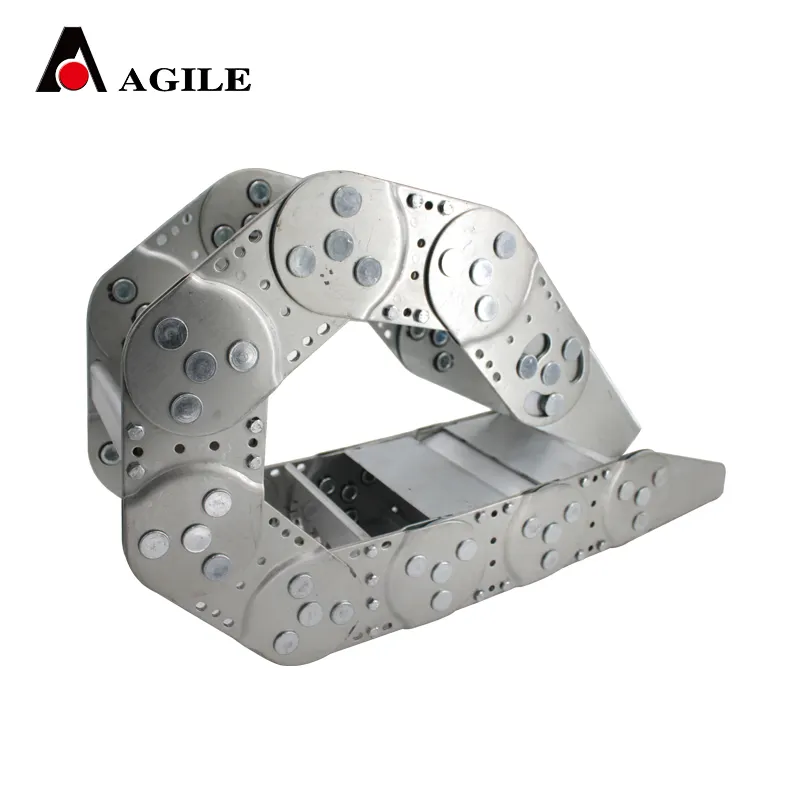drag chain for cnc
Understanding Drag Chains for CNC Machines
In the realm of CNC (Computer Numerical Control) machining, efficiency and precision are paramount. One of the critical components that enhance these attributes is the drag chain, a device designed to organize and protect the cables and hoses that power and control the machinery. This article delves into the importance of drag chains, their types, applications, and how they contribute to the operational efficiency of CNC machines.
What is a Drag Chain?
A drag chain, often referred to as a cable carrier or energy chain, is a conveyance system used to guide and protect the moving cables and hoses in machinery, particularly CNC machines. As these machines operate, various cables need to move in synchronization with the machine's movements, which can lead to tangling, wear, and ultimately, failure if not properly managed. Drag chains provide a structured path for these cables and hoses, ensuring they remain organized and protected from mechanical wear and tear.
Importance of Drag Chains in CNC Applications
Drag chains play a vital role in CNC operations for several reasons
1. Protection By housing cables and hoses, drag chains prevent them from being damaged by moving parts, sharp edges, or environmental factors such as dust and debris. This is particularly important in industrial settings where machinery operates under harsh conditions.
2. Organization They help maintain a neat and organized workspace. Cables that are unruly can not only create a safety hazard but also complicate maintenance and repairs, leading to longer downtimes.
3. Reduced Wear and Tear A well-designed drag chain minimizes friction and abrasive forces acting on the cables and hoses, increasing their lifespan and reliability. This is essential as failure of these components can lead to costly downtime and production losses.
4. Flexibility and Movement During machining operations, CNC tools often experience movement in multiple axes. Drag chains are designed to accommodate this movement, providing a smooth route for cables and allowing for greater machine flexibility.
Types of Drag Chains
drag chain for cnc

There are various types of drag chains available in the market, each suited for specific applications and environments
1. Plastic Drag Chains Lightweight and resistant to corrosion, these chains are ideal for lighter-duty applications. They are commonly used in environments where exposure to chemicals or extreme temperatures is limited.
2. Metal Drag Chains Offering greater durability and strength, metal drag chains are suitable for heavy-duty applications. They can withstand high temperatures and offer enhanced protection against external damage.
3. Flexible Drag Chains Designed for applications with high degrees of movement and flexibility, these chains allow for a wide range of motion without compromising the integrity of the cables.
4. Horizontal and Vertical Chains Depending on the layout of the CNC machine, different chain configurations are required. Horizontal drag chains are used for lateral movements, while vertical chains are designed for machines that operate on a vertical axis.
Installation and Maintenance
Proper installation of drag chains is critical for their effectiveness. It involves assessing the specific needs of the CNC machine, including the number and type of cables, potential movement range, and environmental conditions.
Once installed, regular maintenance is essential to ensure optimal performance. This includes inspecting for wear, ensuring that the connections are secure, and cleaning any debris that may accumulate within the chain. Implementing these maintenance practices can significantly extend the life of both the drag chain and the cables it protects.
Conclusion
Drag chains are an indispensable component of CNC machines, enhancing their efficiency, longevity, and safety. By protecting and organizing cables and hoses, they facilitate smooth operations and minimize the risk of downtime due to cable failures. As CNC technology continues to evolve, the importance of drag chains will only continue to grow, underscoring the need for manufacturers and operators to embrace these critical elements in their machining processes. Investing in the right type of drag chain and ensuring proper installation and maintenance can yield significant returns in productivity and reliability in CNC machining operations.








